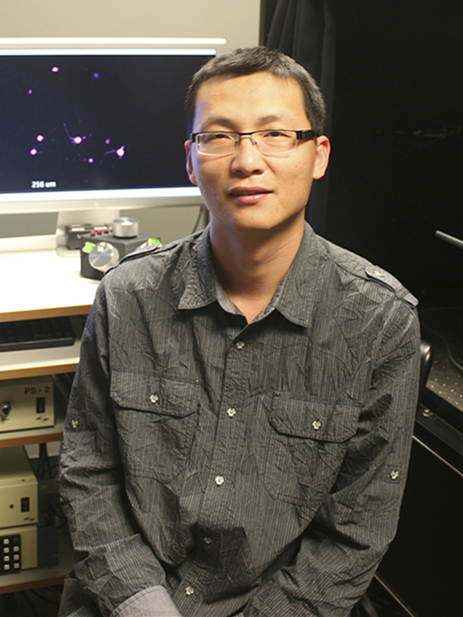Principal Investigator
Yong Zhang
Synaptic Plasticity, AMPA Receptor, Trafficking, In Vivo Two Photon Imaging
address: Neuroscinece Research Institute, Peking University 38 Xueyuan Road, Haidian district,Beijing, 100191
email: yongzhang@hsc.pku.edu.cn

Research Interests:
Dr. Yong Zhang’s research focuses on elucidating the molecular mechanism underlying synaptic plasticity and learning and memory in the brain in both health and disease. Specifically, we utilize two photon imaging to study AMPA receptor dynamics, neuronal activity (GCamP6), and activity of different signaling pathways (FRET or single color based biosensors) in vivo during animal behavior and learning and memory.
Selected Publications:
1. Zhang Y, Cudmore R, Lin DT, Linden DJ, and Huganir RL. 2015. Visualization of NMDA receptor-dependent AMPA receptor synaptic plasticity in vivo. Nat. Neurosci. 18: 402-407.
2. Sharma K, Choi SY, Zhang Y, Nieland T, Long S, Li M, and Huganir RL. 2013. High-throughput Genetic Screen for Synaptogenic Factors: Identification of LRP6 as Critical for Excitatory Synapse Development. Cell Rep. 5: 1330-1341.
3. Zhang Y, Billington CJ Jr, Pan D, and Neufeld TP. 2006. Drosophila target of rapamycin kinase functions as a multimer. Genetics. 172: 355-362.
4. Pan D, Dong J, Zhang Y, and Gao X. 2004. Tuberous sclerosis complex: from Drosophila to human disease. Trends Cell Biol. 14: 78-85.
5. Zhang Y, Gao X, Saucedo L, Ru B, Edgar B, and Pan D. 2003. Rheb is a direct target of the tuberous sclerosis tumour suppressor proteins. Nat. Cell Biol. 5: 578-581.
6. Gao X#, Zhang Y#, Arrazola P, Hino O, Kobayashi T, Yeung R, Ru B, and Pan D. 2002. Tsc tumor suppressor proteins antagonize amino-acid-TOR signaling. Nat. Cell Biol. 4: 699-704. (#Equal contribution)
Lab Website: